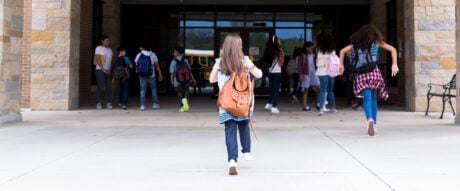The Canadian government offers several programs to help families save for their children’s education, including Registered Education Savings Plans (RESPs) and the Canada Education Savings Grant (CESG), both of these options depend on family members or friends making regular contributions.
For many low-income Canadian families, fitting these contributions into their budget isn’t always possible. Thankfully, there’s a program to help these families save for their children’s post-secondary education: the Canada Learning Bond (CLB).
What is the CLB?
The CLB is designed to help low-income families save for the costs of post-secondary studies at a recognized education institution. Studies can be part-time or full-time, and programs at universities, colleges, trade schools, CEGEPs and apprenticeship programs are all eligible.
The government contributes this money to an RESP under the child’s name. Unlike with the CESG, you don’t need to make any personal contributions to the RESP to receive the CLB.
» MORE: What to look for when choosing a student bank account
CLB eligibility
To be considered eligible for the CLB, a child needs to meet the following requirements:
- Must be from a low-income family
- Must be born on or after January 1, 2004
- Must be a resident of Canada
- Must have a valid Social Insurance Number (SIN)
- Must be named in an RESP
Eligibility depends on the adjusted income of the primary caregiver, including income from a cohabitating spouse or common-law partner, and limits vary based on the number of qualified children in the family. The Government of Canada website has a breakdown of eligibility amounts for CLB based on income and number of children.
How to apply
Applying for the CLB is straightforward and can be done quite easily with the help of an RESP provider.
- Ensure you have all the required information to request the CLB, including your SIN and the child’s SIN. If you’re not the child’s primary caregiver, you’ll need that person’s SIN, too.
- If you haven’t yet, open an RESP for the child with a participating RESP provider. This financial institution will help you with the application forms and process.
- Once you’re approved, wait for the CLB to be deposited into your account each year that the child remains eligible.
Note that you do not have to have a bank account to open an RESP. You also don’t need to contribute to the RESP to qualify for the CLB.
How much money can I receive from the CLB?
The Canadian government will contribute up to $2,000 in CLB funds into an RESP for eligible children. Here’s the breakdown:
- $500 in the first year of eligibility
- $100 each year in which the child is eligible, up to the year they turn 15.
FAQs
Every year that the child is eligible, the CLB will be deposited. The deposits will continue until the government has deposited the maximum CLB of $2,000.
If the RESP is not used, you have a few options of what to do with any funds you have contributed. However, any CLB funds will go back to the government.
Yes. Payments accumulate each year that the child is considered eligible. If you open an RESP when the child is 10-years-old, and they would have been eligible to receive the CLB in previous years, you may be able to receive retroactive CLB payments. Ask your RESP provider for assistance.
DIVE EVEN DEEPER

Registered Education Savings Plan: How RESPs Work in Canada
An RESP is a tax-free investment account that helps parents and families save for a child’s post-secondary education.

How to Boost RESP Savings with the Canadian Education Savings Grant (CESG)
The Canadian Education Savings Grant (CESG) can boost an RESP account by up to $7,200 in a lifetime. Here’s how to make the most of this government grant.

Tax-Free Savings Account: What a TFSA Is and How To Use It
A tax-free savings account (TFSA) can be used to tax-shelter your investment and the interest earned inside this account. You can contribute up to $7,000 in 2024.

TFSA vs. RRSP: How to Choose
The tax-free withdrawals of a TFSA offer more flexibility, but the tax-deferred contributions of an RRSP are great for retirement. The type of account you choose will depend on your savings goals.

